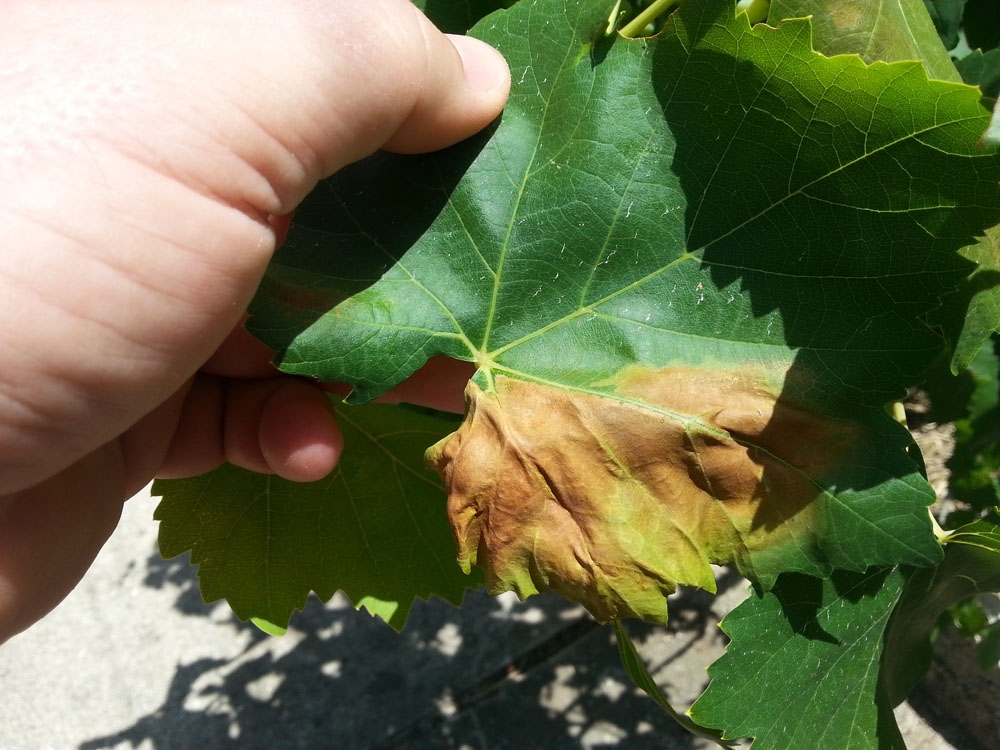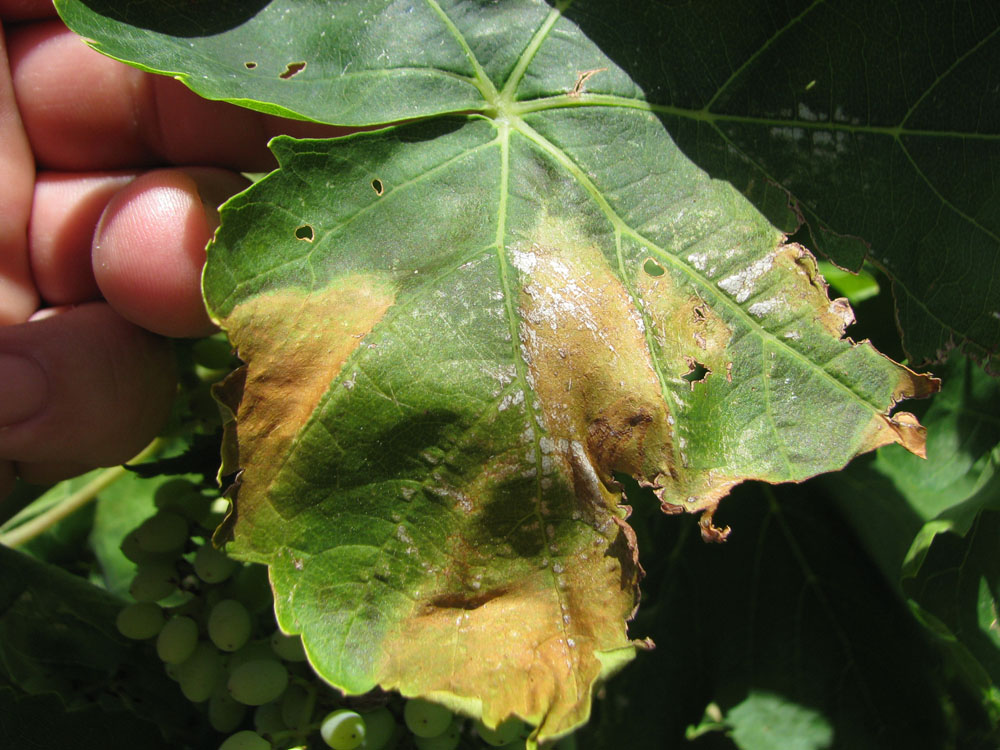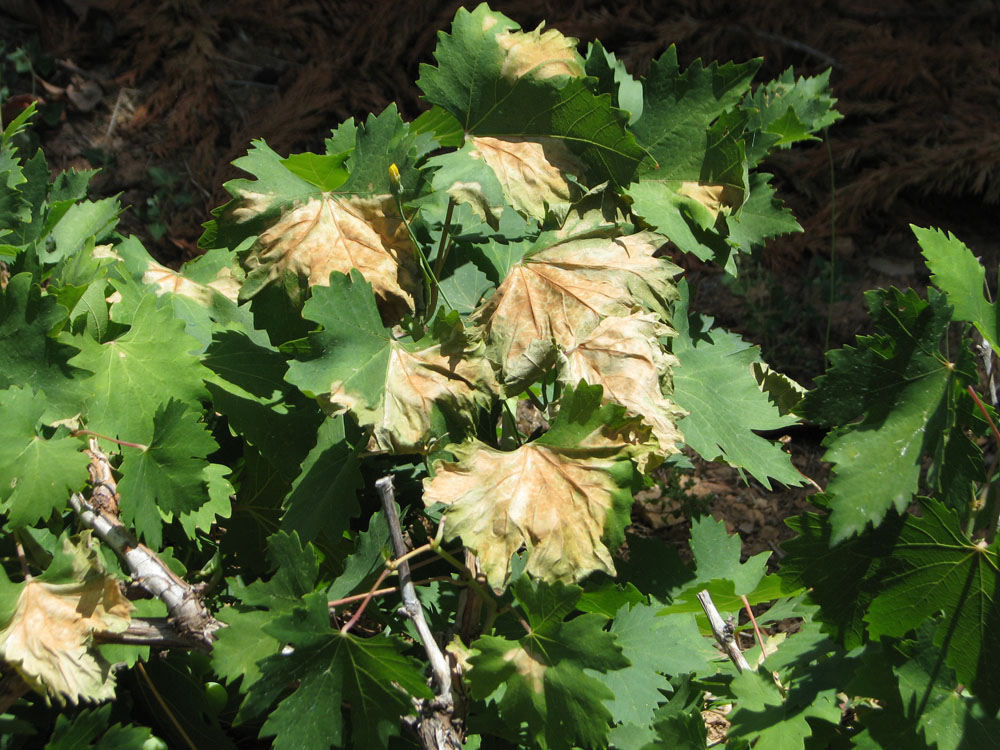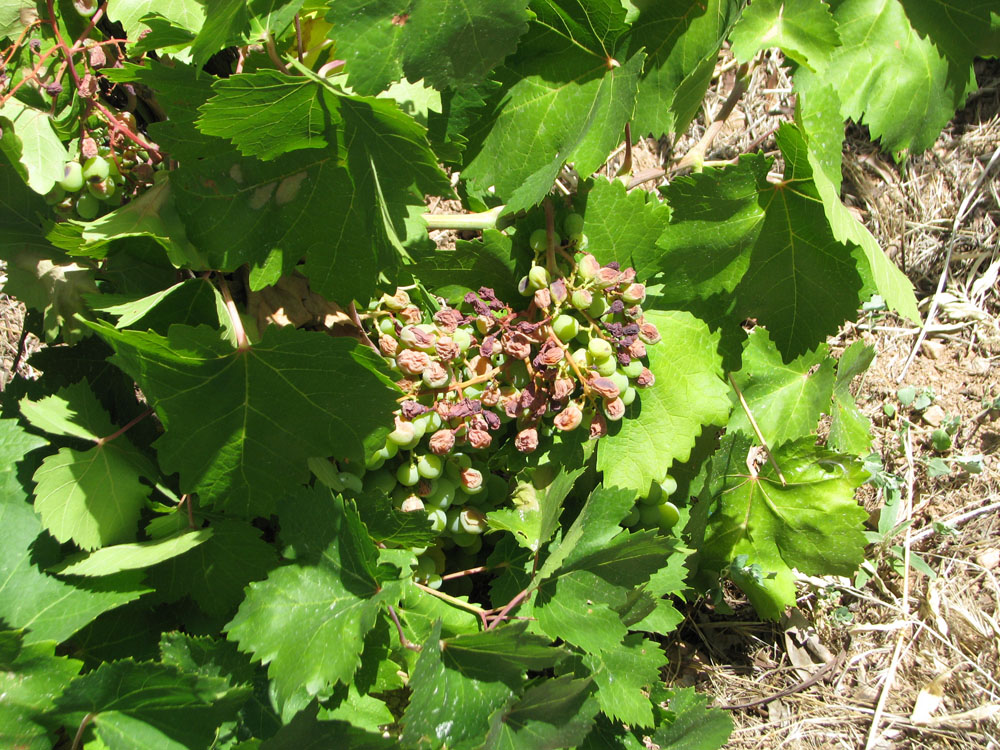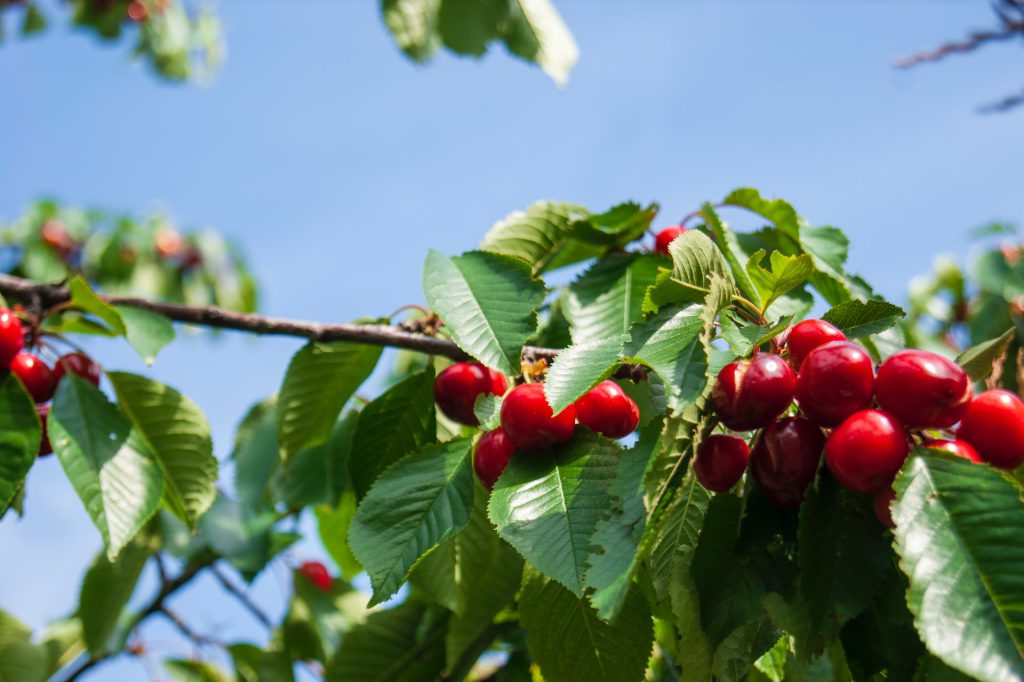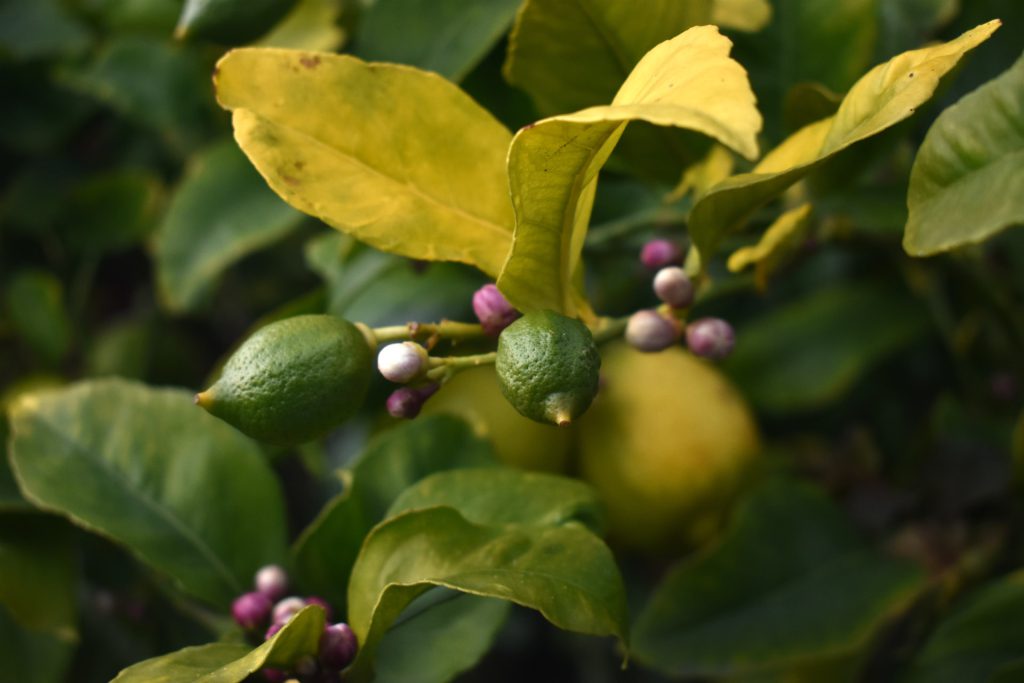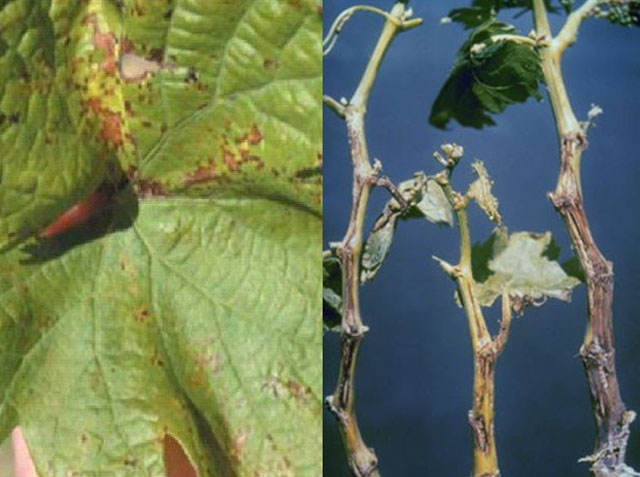Not only grape vines are infested by Pierce’s disease, but also several other species including olive trees (Olea europaea), almond trees (Prunus amygdalus), oleander (Nerium oleander), citrus trees, peach trees, apricot trees, alfalfa, oak trees (Quercus spp.), rosemary (Rosmarinus officinalis), myrtle (Myrtus communis) and ramnus (Ramnus alaternus).
Symptoms of Pierce’s disease on grape vines
The main symptoms of a Pierce’s disease infestation are drying of the leaves and rapid defoliation during the warm periods of the year.
Pierce’s disease. Affected leaves on a vine
Pierce’s disease. Affected leaf on vine
Pierce’s disease. Dried leaves on a vine
Pierce’s disease. Affected leaves on a vine
Diseased infested leaves, gradually dry out and fall off while the stalks remain attached to the vines.
Affected shoots (canes) are only sporadically woody and the remaining green parts are killed by the low winter temperatures.
Pierce’s disease. Wilted grape bunches on vines
Raceme of diseased vines cease to grow, wither and dry out.
What causes the Pierce’s disease
Xylella fastidiosa (bacterium: Xanthomonadaceae) is a Gram-negative, aerobic bacterium of the family Xanthomonadaceae, which grows in the xylem-inhabiting bacteria of its host plants and causes the Pierce’s disease.
It has an optimum growth temperature of 26-28 °C. It enters the xylem vessels where it moves both downward and upward.
Growing populations of the bacterium restrict water movement in xylem tissue and the development of symptoms is associated with a high percentage of clogged vessels.
Xylella fastidiosa infects a large number of plant species that may not be symptomatic and thus act as sources of infection for insect vectors.
Known hosts of Xylella fastidiosa are vines, olive trees (Olea europaea), almond trees (Prunus amygdalus), oleander (Nerium oleander), citrus trees, peach trees, apricot trees, alfalfa, oak trees (Quercus spp.), rosemary (Rosmarinus officinalis), myrtle (Myrtus communis) and ramnus (Ramnus alaternus).
Cicadas are carriers of the Xylella fastidiosa (bacterium: Xanthomonadaceae) pathogen
Xylella fastidiosa is transmitted by sucking pests that feed on the sap of woody veins.
The carriers of the bacterium belong to two families of the true bugs (Cicadellidae and Cercopidae) that are commonly called ‘cicadas’.
Cercopidae
Cicadellidae
Transmission is rapid, after two hours of feeding the insect on an infected plant, without any incubation period in the carrier and the insect remains infective throughout its life. The bacterium is not transmitted to the insect’s offspring.
More information can be found at: Xylella fastidiosa in the EPPO region
Why it is called Pierce’s disease
The disease was first identified in 1892 by Newton B. Pierce (1856-1916), who was the first professional plant pathologist, on California vines near Anaheim. In Anaheim it was known as Anaheim’s disease.
Cure for the Pierce’s disease in grapevines
There is no cure for Pierce’s disease.
Prevention is the best option for the management of Pierce’s disease.
Removal of infected vines and vector control are used in California to reduce disease spread.
For more information, please check: Pierce’s Disease of Grapevines: A Review of Control Strategies and an Outline of an Epidemiological Model.
Tags: DISEASES • GRAPEVINES • PIERCE • VINEYARD

